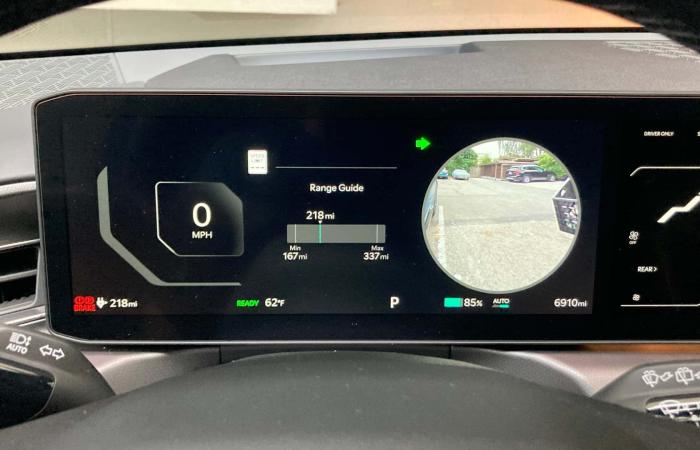Electric car news
In the ever-changing world of automobiles, some technological innovations stand out for their simplicity and usefulness. Among them, blind spot cameras stand out as an essential safety device. Let’s find out together why this system should equip all modern cars, especially electric vehicles.
How Blind Spot Cameras Work Ingeniously
The concept is disconcertingly simple but terribly effective. When you activate your turn signal, a live video of the corresponding blind spot is instantly displayed on your digital dashboard. This technology, called “Blind-Spot View Monitor” by the Hyundai Motor group, already equips Kia, Hyundai and Genesis models. Tesla has the same type of functionality as well.
The display is done intuitively:
- Left turn signal: left blind spot view
- Right turn signal: right blind spot view
This feature provides an additional layer of safety, particularly valuable in urban or highway driving situations. It does not replace the driver’s vigilance, but effectively complements it.

A growing need in the face of vehicle developments
The increase in the average size of vehicles, especially SUVs and electric carsaccentuates the problem of blind spots. The Kia EV9, for example, perfectly illustrates this trend with its imposing dimensions. In this context, blind spot cameras become a major asset for safety.
Manufacturers must take several factors into account:
- The increase in blind areas due to the design of modern vehicles
- The need to protect vulnerable users (cyclists, pedestrians) in urban areas
- The importance of calm driving on the highway when changing lanes
Faced with these challenges, the systematic integration of blind spot cameras seems obvious.
A technology in full expansion
While Hyundai Motor Group was a pioneer in this area, other manufacturers are starting to follow suit. Tesla offers a similar feature on its models, with one notable difference: the display is on the central screen and not directly in front of the driver.
Rivian, the American manufacturer of electric vehiclesrecently added this feature to its SUVs and pickups via an over-the-air software update. The move shows how easily this technology can be deployed on vehicles that already have the necessary hardware.
Honda had experimented with a system called LaneWatch, which only displayed the passenger-side blind spot. However, the Japanese brand has returned to a more traditional blind spot monitoring system on its recent models.
The Future of Blind Spot Cameras
Widespread adoption of this technology seems inevitable in the medium term. Car manufacturers have every interest in integrating this device for several reasons:
- Significant improvement in security
- Relatively low cost compared to the benefits provided
- Possibility of integration via software updates for compatible vehicles
It is conceivable that in the near future, blind spot cameras will become standard equipment, just like airbags or ABS today.
The impact on driving electric vehicles
For the electric carsoften at the cutting edge of technology, the integration of blind spot cameras represents an additional asset. These vehicles, generally equipped with large batteries under the floor, tend to be heavier and more bulky than their thermal counterparts.
The presence of blind spot cameras on models like the Kia EV9 or Tesla contributes to:
- Strengthening the active safety of the vehicle
- Facilitate maneuvers in urban environments despite imposing dimensions
- Reassure drivers who are not used to driving large vehicles
This technology fits perfectly into the philosophy of electric vehiclescombining innovation, safety and driving comfort.
Ultimately, blind spot cameras represent a major advance in the field of automotive safety. Their ease of use, coupled with their effectiveness, make them a piece of equipment that is destined to become widespread quickly. Whether you are driving an electric city car or a massive SUV, this device provides additional peace of mind on the road. All that remains is to hope that all manufacturers follow suit to make this technology a standard in the automotive industry.
Written by Philippe Moureau
Forty-something electric car enthusiast. I am interested in the energy transition and the fight against greenhouse gas emissions. I am a true electric car enthusiast and environmental advocate.
React to the article








